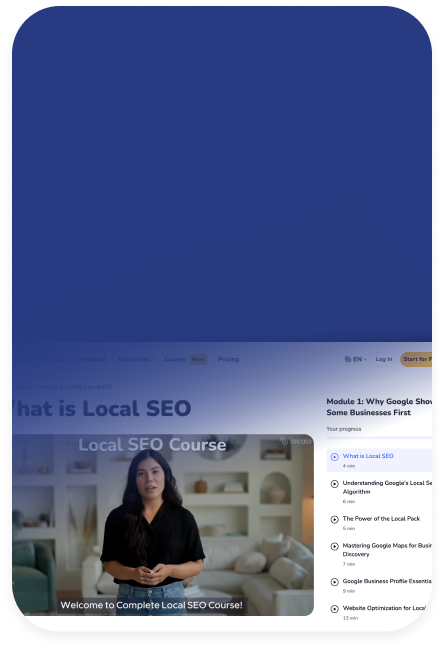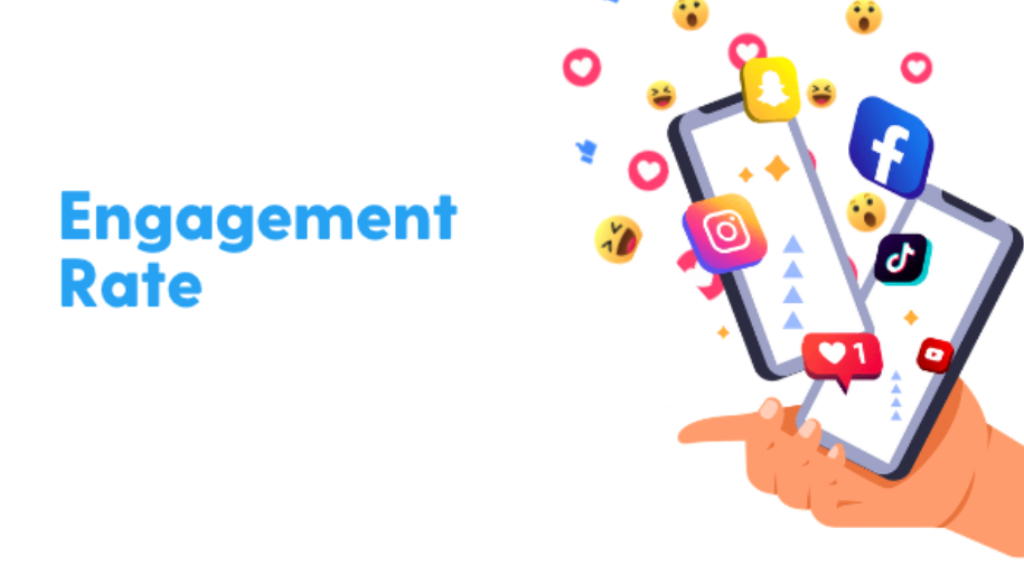
Ready to get more customers calling?
Take FREE Local SEO Course
Available now in English
Engagement Rate - is a metric that measures how well an audience interacts with content published by a brand on various digital platforms, such as social media posts, blogs or websites. This indicator is usually expressed as a percentage or ratio and assesses how well content engages audiences by measuring actions such as likes, comments, shares, views, clicks and other forms of interaction.

Why is it important to measure engagement rate?
- Measuring the effectiveness of content - marketers are able to determine how effective their content is in capturing the attention and eliciting audience response. High audience engagement indicates that the content is interesting, valuable and resonates with the audience.
- Increasing visibility - on social media platforms, algorithms favour content with high engagement, promoting it in users’ feeds.
- Building relationships with audiences - a high engagement measurement indicates that a company is effectively building relationships with customers, which is key to maintaining loyalty and increasing customer satisfaction.
- Understanding audience preferences - analysing which content generates the most engagement helps to understand audience preferences and expectations.
- Influencing purchase decisions - users who regularly interact with a brand are more likely to purchase its products or services because they feel more trust and are more connected to the brand.
- Optimising marketing strategies - regular monitoring of the engagement metrics allows marketing strategies to be optimised on an ongoing basis. Companies can react quickly to changing trends and adapt their actions to maximise the effectiveness of their campaigns.
How do I calculate engagement rate?
- Define interactions - the first step is to define which user actions will be counted as interactions. These could be likes, comments, shares, clicks, video views, sign-ups via forms and more.
- Collect the data - collect the total number of these interactions over a certain period of time. For example, if you are analysing posts on Instagram, add up all the likes, comments and shares for a given post or series of posts.
- Define the denominator - choose an appropriate denominator for your calculation. This could be a number:
- Page views (for websites)
- Followers (for social profiles)
- Reach (number of unique users who have seen the content)
- Calculate Average Engagement Rate - divide the total number of interactions by the chosen denominator, then multiply the result by 100 to get the percentage.
How do I use engagement rates in my marketing strategy?
- Content analysis and optimisation - by regularly monitoring this indicator, you can identify which types of content generate the most engagement.
- Segmentation and personalisation - by analysing engagement data across different audience segments, you can better understand their preferences and tailor your communications to their specific needs.
- A/B testing - using the engagement rate to conduct A/B testing allows you to experiment with different variations of content, formats or publication times to see which elements resonate best with your audience.
- Campaign planning - engagement rate can serve as an indicator of the effectiveness of different promotional channels and content types, which is valuable when planning campaigns.
- Building relationships with audiences - regularly analysing this indicator helps to identify the most active and engaged users, enabling more personalised and targeted actions to maintain their interest and loyalty.
- Evaluating ROI - engagement rate can be used to assess the return on investment (ROI) of various marketing activities.
Summary
Engagement rate is a key performance measure for content published by brands on digital social media platforms, measuring user engagement such as likes, comments, shares or clicks. Calculating total engagement allows companies to assess how well their content resonates with their audiences, which is fundamental to optimising content strategy and increasing reach. Monitoring it regularly also enables a better understanding of the target audience, which translates into more effective content marketing strategies, planning and building stronger relationships with customers.
![What is Engagement Rate - Definition [Marketing Dictionary]](/assets/img/dictionary-background.webp)
